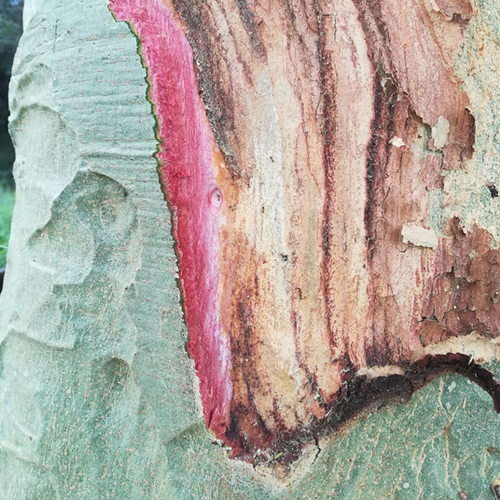
Background
Fever bark contains the chemicals yohimbine and reserpine, which can lower blood pressure. These chemicals might also be unsafe.
People use fever bark for high blood pressure, malaria, rheumatoid arthritis (RA), and many other conditions, but there is no good scientific evidence to support these uses.
Don't confuse fever bark with Cinchona, which is sometimes called fever bark or fever tree. These are not the same.
Safety Safety definitions
Special Precautions & Warnings:
Pregnancy and breast-feeding: There isn't enough reliable information to know if fever bark is safe to use when pregnant or breast-feeding. Stay on the safe side and avoid use.Anxiety: A chemical in fever bark might make anxiety worse.
Depression: A chemical in fever bark might make depression worse.
Stomach ulcers: Some of the chemicals in fever bark might make stomach ulcers worse.
Schizophrenia: Some of the chemicals in fever bark might cause a psychotic episode.
Surgery: Some chemicals in fever bark act like stimulants and might increase the risk of bleeding. Fever bark might interfere with surgery by increasing heart rate, blood pressure, and bleeding risk. Stop using fever bark at least 2 weeks before a scheduled surgery.
Effectiveness
Dosing & administration
Interactions with pharmaceuticals
Medications changed by the liver (Cytochrome P450 2D6 (CYP2D6) substrates)
Interaction Rating=Moderate Be cautious with this combination.
Some medications are changed and broken down by the liver. Fever bark might change how quickly the liver breaks down these medications. This could change the effects and side effects of these medications.
Medications for depression (MAOIs)
Interaction Rating=Major Do not take this combination.
Fever bark contains a chemical called yohimbine. Yohimbine might affect the body in some of the same ways as some medications for depression called MAOIs. Taking fever bark along with MAOIs might increase the effects and side effects of MAOIs.
Some common MAOIs include phenelzine (Nardil), selegiline (Zelapar), and tranylcypromine (Parnate).
Medications for high blood pressure (Antihypertensive drugs)
Interaction Rating=Moderate Be cautious with this combination.
Fever bark might increase or decrease blood pressure. Taking fever bark along with medications that lower blood pressure might reduce the effects of these medication or cause blood pressure to go too low. Monitor your blood pressure closely.
Medications that decrease break down of other medications by the liver (Cytochrome P450 2D6 (CYP2D6) inhibitors)
Interaction Rating=Moderate Be cautious with this combination.
A chemical in fever bark, yohimbine, is changed and broken down by the liver. Some drugs decrease how quickly the liver changes and breaks down yohimbine. This could change the effects and side effects of fever bark.
Medications that decrease break down of other medications in the liver (Cytochrome P450 3A4 (CYP3A4) inhibitors)
Interaction Rating=Moderate Be cautious with this combination.
A chemical in fever bark, yohimbine, is changed and broken down by the liver. Some drugs decrease how quickly the liver changes and breaks down yohimbine. This could change the effects and side effects of fever bark.
Medications that slow blood clotting (Anticoagulant / Antiplatelet drugs)
Interaction Rating=Minor Be watchful with this combination.
Fever bark might slow blood clotting. Taking fever bark along with medications that also slow clotting might increase the chances of bruising and bleeding.
Medications used during surgery (Anesthesia)
Interaction Rating=Major Do not take this combination.
Fever bark contains a chemical called reserpine. Taking reserpine along with medications used for surgery can cause heart problems. Be sure to tell your doctor what natural products you are taking before having surgery. You should stop taking fever bark at least two weeks before surgery.
Phenothiazines
Interaction Rating=Moderate Be cautious with this combination.
Fever bark contains a chemical called yohimbine. Some phenothiazines have effects similar to yohimbine. Taking fever bark and phenothiazines together might increase the effects and side effects of both.
Stimulant drugs
Interaction Rating=Moderate Be cautious with this combination.
Stimulant drugs speed up the nervous system. By speeding up the nervous system, stimulant medications can make you feel jittery and speed up your heartbeat. Fever bark might also speed up the nervous system. Taking fever bark along with stimulant drugs might cause serious problems including increased heart rate and high blood pressure.
Interactions with herbs & supplements
Indian Snakeroot: Fever bark and Indian snakeroot both contain a chemical called reserpine. Using fever bark and Indian snakeroot together might increase the side effects from reserpine.
Rauvolfia vomitoria: Fever bark and Rauvolfia vomitoria both contain chemicals called reserpine and yohimbine. Using fever bark and Rauvolfia vomitoria together might increase the side effects from these chemicals.
St. John's Wort: Fever bark contains a chemical called reserpine. Taking St. John's wort along with fever bark might reduce the effects of reserpine.
Yohimbe: Fever bark and yohimbe both contain a chemical called yohimbine. Using fever bark and yohimbe together might increase the side effects from yohimbine.


